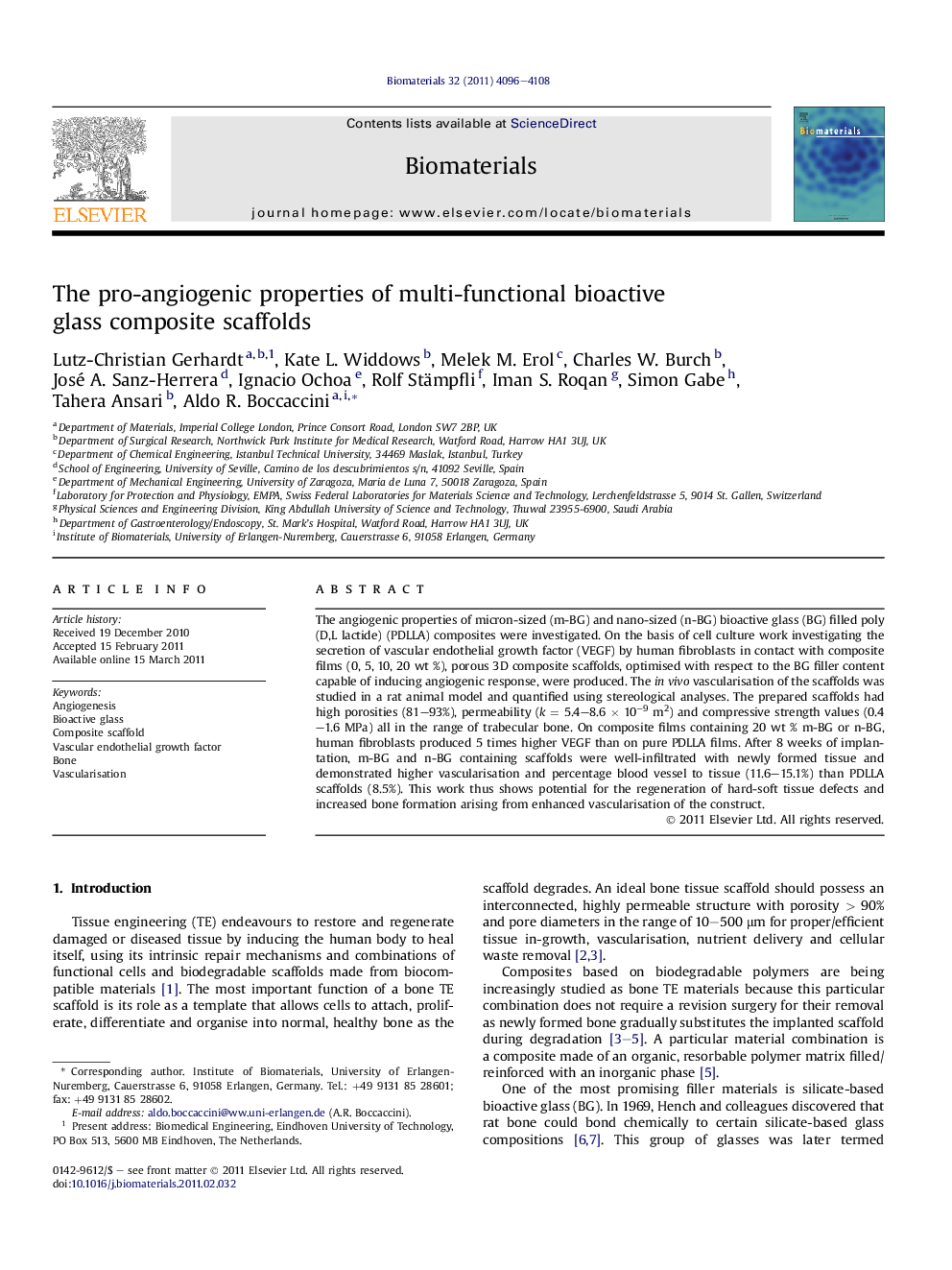| Article ID | Journal | Published Year | Pages | File Type |
|---|---|---|---|---|
| 7141 | Biomaterials | 2011 | 13 Pages |
The angiogenic properties of micron-sized (m-BG) and nano-sized (n-BG) bioactive glass (BG) filled poly(D,L lactide) (PDLLA) composites were investigated. On the basis of cell culture work investigating the secretion of vascular endothelial growth factor (VEGF) by human fibroblasts in contact with composite films (0, 5, 10, 20 wt %), porous 3D composite scaffolds, optimised with respect to the BG filler content capable of inducing angiogenic response, were produced. The in vivo vascularisation of the scaffolds was studied in a rat animal model and quantified using stereological analyses. The prepared scaffolds had high porosities (81–93%), permeability (k = 5.4–8.6 × 10−9 m2) and compressive strength values (0.4–1.6 MPa) all in the range of trabecular bone. On composite films containing 20 wt % m-BG or n-BG, human fibroblasts produced 5 times higher VEGF than on pure PDLLA films. After 8 weeks of implantation, m-BG and n-BG containing scaffolds were well-infiltrated with newly formed tissue and demonstrated higher vascularisation and percentage blood vessel to tissue (11.6–15.1%) than PDLLA scaffolds (8.5%). This work thus shows potential for the regeneration of hard-soft tissue defects and increased bone formation arising from enhanced vascularisation of the construct.
